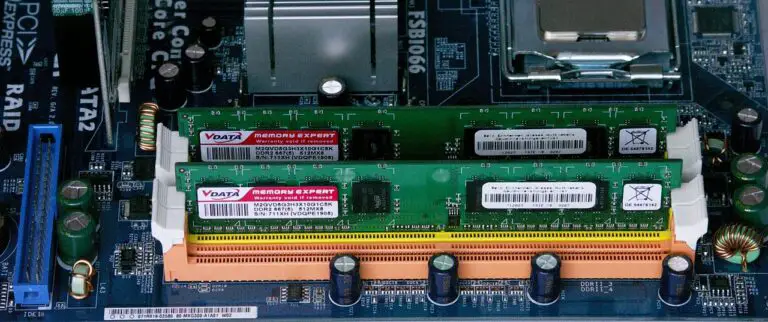Difference Between Static RAM and Dynamic RAM
There are some crucial differences between static RAM and dynamic RAM, which makes them different in terms of characteristics. Although both these types of RAM are used to hold the data temporarily, each of them has its functioning.
A RAM stands for Random Access Memory also known as short-term digital storage of any computer machine that can randomly be accessed. A RAM stores the data for active applications with the operating system of the computer loaded in it. It is volatile in nature, which means it will not store the data after the power supply is cut off.
The more the RAM in any device the faster it will read and write the data. A device with less RAM and more number of applications will considerably work slower than the device with more RAM.
But here’s a catch!
RAM is also of different types, distinct from each other, and with different characteristics.
Precisely each of us knows about what is RAM and how it works. Besides, there are many of us who don’t know that there are two different types of RAMs:
- Static RAM (SRAM)
- Dynamic RAM (DRAM)
The major difference!
A static RAM and dynamic are different from each other in many contexts in which one major difference is the way they hold the data. Both SRAM and DRAM uses different techniques to store the data. In the case of SRAM, each memory cell uses an array of six transistors to store the data. While in the case of DRAM, it uses one transistor and one capacitor for each memory cell. With the use of only one transistor and a single capacitor, DRAM needs to refresh for each memory cell whereas SRAM with an array of six transistors does not require any refreshing.
Difference Between Static RAM and Dynamic RAM
First, watch this video on the differences between static RAM and Dynamic RAM:
Definitions
Static RAM:
SRAM is a typical random access memory that uses an array of six transistors and is made up of CMOS technology. Its structure consisting of two cross-coupled inverters which hold the data. Unlike the other type, DRAM, it is much faster and stores data till the power is supplied. Moreover, it consumes less power than DRAM and comprises of two extra transistors for access control.
Dynamic RAM:
DRAM is another type of random access memory that is slower than SRAM in terms of reading and writing the data. Besides, DRAM also consists of one transistor and in this case, a capacitor is used to store the data. Also, DRAM requires refreshing of each memory cell to retain the data for a long time and consumes more power.
Working
SRAM Working:

Four transistors (T1, T2, T3, T4) are arranged in an interconnected manner in order to create a stable logical state. In this case, T1 and T4 are off and T2 and T3 are on. In order to generate a logic state, node C1 is high and C2 is low. For the logical state of 0, the C1 is low and C2 is high, T1 and T4 are on in the specified state and T2 and T3 are off. pAll states remain stable until the power voltage is applied with the Direct Current (DC).
To open and close the button and to control transistors T5 and T6, which allow reading and writing, the SRAM address line is used. The signal is then transferred to this address line for reading operation for which T5 and T6 get on, and the bit value is read on line B. The signal is added to the B bit line and its complement is added to B ‘for the writing process.
DRAM Working:

The address line is enabled as you read and write the bit value from the node. If there is a tension in the address line and there is no tensile voltage in the address line, the transistor present in the circuitry acts as a switch that can be shut down (allowing current to flow). A tensile signal is used for the write operation on the bit line where high voltage is 1, and low voltage 0. A signal is then used for the address line that allows the charge to be passed to the capacitor.
When the address line for the reading process is identified, the resistor triggers and the load deposited on the capacitor is delivered on a bit line and to the sense amplifier. The sensory amplifier determines the cell’s logic 1 or logic 2 by measuring the voltage of the condenser to a reference point. The cell readings allow the condenser to be removed and need to be replaced in order to finish the work. Whereas a DRAM is generally an electronic system that is used for storing the single bit (i.e. 0,1).
SRAM vs DRAM – Comparison Table
| Basis | Static RAM | Dynamic RAM |
| Used in | Cache memory | Main memory |
| Structure | Complex and comprises an array of six transistors, latches, and cross-coupled inverters | Simple and comprises of one capacitor and very few transistors |
| Size | Small and minimalistic | Larger than SRAM |
| Density | Less density | Highly density |
| Latency | Low | High |
| Power Consumption | Less | More |
| Memory Cell Refreshment | Not required | Required |
| Time | Accessing stored data requires less time | Accessing stored data requires more time |
| Storage | Less storage capacity | High storage capacity |
| Data Storing | Transistor is used to store a single bit of data | A separate capacitor is used to store a single bit of data |
| Applications | SRAM is used to create speed-sensitive cache | DRAM is used to create a larger RAM space system |
The Final Takedown
The major difference between static RAM and dynamic RAM is the technique they use to store the data. However, both these RAMs are different from each other in many contexts including speed, size, ram, infrastructure, etc. Static RAM is helpful in reading and writing the data at a faster rate than dynamic RAM. On the other hand, DRAM is more useful in storing data for a longer time.
If there are any other related queries, please let us know in the comment box below.






